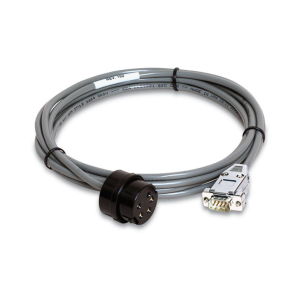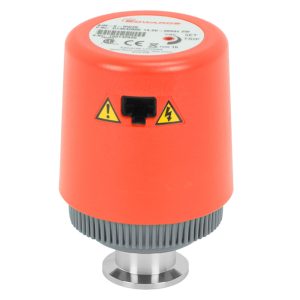Gauges And Controllers Pressure Measurement
Different Types of Gauges
Below we list the different types of gauges used in industries.
Analog Pressure
Analog Pressure Gauges are mechanical instruments which measure the force that a contained liquid or gas exerts on a unit area. An analog gauge often relies on a coiled tube attached to a pointer to directly display pressure against a dial face. In rarer cases—an auto dashboard is one—the dial may display the analog signal of the pressure measured through a pressure transducer. Key specifications include maximum/minimum measurable pressure, dial size, connection location, connection size, and accuracy grade. Analog pressure gauges provide inexpensive measuring of pressure directly in pipelines and gas vessels. They can operate without electrical power and provide immediate and continuous readings. Most cannot be interrogated by a process controller. Manometers and vacuum gauges are also covered under pressure gauges.
Digital Pressure
Digital Pressure Gauges are electro-mechanical instruments which measure the force that a contained liquid or gas exerts on a unit area. A digital pressure gauge displays pressure reading numerically usually with an LCD readout. Pressure sensing can be electronic or mechanical. Key specifications include maximum/minimum measurable pressure, signal output, connection location, connection size, and accuracy. Digital pressure gauges need power to operate which can be by battery or from an external source. They can be fitted with outputs for remote interrogation of permanent units or can also be used for portable pressure measuring.
Level
Level gauges are visual instruments used to determine the presence and height of liquid in tanks such as boilers. A level gauge commonly uses a transparent sight tube mounted to the tank sidewall which parallels the height of the fluid contained within the tank. Other methods of detecting the liquid level exist as well. Key specifications include pressure rating and media type, along with considerations for body material and features. Level gauges are often fitted with shut-off and drain valves for maintenance.
Bore
Bore gauges are electro-mechanical or mechanical metrology instruments that measure the internal diameters of machined holes. They are available with analog or digital displays. Key specifications include bore gauge type, measurement range, maximum measuring depth, graduation, as well as a host of possible features. Bore gauges are often supplied with multiple adapters to cover the measuring range.
Depth
Depth gauges are electro-mechanical or mechanical metrology instruments that measure the inside lengths of holes and other machined cavities. A depth gauge generally consists of an anvil, an indicating dial, and a probe assembly. Direct reading rules and digital readouts are available as well. Key specifications include depth gauge type, measurement range, graduation, dial reading, along with a host of possible features. Depth gauges vary in their readouts from simple direct reading tic marks to digitally displayed numerals, with corresponding accuracy. Other depth gauges are used for measuring the tread depths of tires.
Height
Height gauges are electro-mechanical or mechanical metrology instruments that measure the dimension of machined parts from a datum reference–a surface plate, for example. A height gauge generally consists of a rigid column mounted to flat base with a measuring head that displays height from the bottom of the base on a dial, vernier, or digital display. Key specifications include height gauge type, measurement range, and resolution. Height gauges are used in machining operations for inspecting finished parts.
Plug
Plug gauges are simple mechanical inspection instruments used to verify compliance of threaded or plain holes to upper and lower dimensional limits. Plug gauges are designed to “fit” or “not fit” (e.g. Go/No-Go gauge) into holes, etc. Key specifications of limit gauges include the gauge type, gauge function and measurement range. Plug gauges are primarily used as a quick pass/fail test to determine if a hole diameter or thread feature lies within the specified range of acceptance.
Ring
Ring gauges are simple mechanical inspection instruments used to verify product feature compliance to upper and lower dimensional limits. Ring gauges are designed to “fit” or “not fit” (e.g. Go/No-Go gauge) over cylindrical features. Key specifications for ring gauges include the gauge function and measurement range. Ring gauges are used as a quick pass/fail test to determine if the outside diameter or thread feature of a part lies within the specified range of acceptance.
Snap
Snap gauges are simple mechanical inspection instruments used to verify that the outside dimensions of parts are within their specified tolerances. Key specifications include features, range, and accuracy. Snap gauges can be either fixed or adjustable devices. Fixed snap gauges are manufactured to set measurements whereas adjustable snap gauges can be set to measure over ranges of measurements.
Force
Force and Load Gauges are mechanical or electronic metrology instruments that measure the pounds or kilograms applied to objects during compression and/or tension testing, to measure, for example, the force required to shut and latch a door. They can measure forces from very small to very large and can be purchased to fit a variety of ranges. Mechanical force meters can be bought to display either in pounds or in kilograms while electronic versions can be switched between units.
Groove/ID-OD
Groove Gauges are mechanical metrology instruments used in inspection applications to confirm dimensions of machined internal features such as ring grooves, undercuts, inside diameters, etc. They are generally configured to fit through the confines of narrow bores and then be opened to take the measure of any internal features. Some are used to measure concentricity.
Feeler
Feeler gauges are simple strips of dimensionally accurate shim stock used for measuring the gaps between machine elements. Setting automotive contact points and valve lash are two old-school examples of their use. In some instances they are used as precision assembly shims to adjust the clearances between mating parts. They are often sold as sets that increase in thickness by some interval such as 0.001 in. Spark plug gauges are included in this group.
Profile
Profile gauge are metrology instruments used to identify thread pitch sizes or to determine the flatness of surfaces. Thread profile gauges are usually sold as sets that cover a range of thread sizes. Profile gauges used to measure surface roughness often display peak readings along with total-indicated-runout, or TIR, measurements. Profile gauges are also used as templates for duplicating contours in woodworking, and are sometimes called contour gauges. Angular measuring gauges, fillet gauges, taper gauges, etc. are some of the other gauges included here as well.
Thickness
Thickness gauges are mechanical or electro-mechanical metrology instruments used for measuring wall thickness, paint thickness, etc. Some can be set up to measure absolute thickness or relative thickness. They usually employ a pair of caliper-like jaws that lightly contact the top and bottom of the surfaces being measured.
Applications and Industries
Although the term gauges encompasses a wide variety of measuring instruments, they can generally be grouped by what they measure. Thus a convenient way to find a particular kind of gauge is to select from the list of sub-categories by measurement type. Or, if an application is not listed there specifically, check under intended applications for additional choices.
Gauges generally are direct reading instruments as opposed to sensors, transducers, etc. which tend to rely on electronics to make their measurements and are often integrated into a larger measuring systems. Thus pressure gauges, be they analog or digital, make direct readings and provide data at the instruments themselves. The same applies to level gauges and to the many various gauges used for machined parts metrology. Some gauges allow porting to external devices for data acquisition/documentation purposes, but this is not a requirement. Some gauges provide no reading at all, especially those referred to as fixed limit gauges, which are used to evaluate tolerancing on parts and provide simple yes or no answers to the question of whether or not a particular part falls within its design parameters. Other gauges such as feeler gauges also rely on this same simple tactile feedback.
Analog pressure gauges are selected over digital versions when cost is a concern or where accuracy isn’t critical. Another advantage of analog gauges is that they need no power supply which for digital gauges usually means batteries. An advantage of many digital gauges is their ability to feed outputs to data acquisition systems.
Liquid level gauges are generally direct reading and sized according to the depth of the tank they monitor.
Analog and digital versions are generally available for the many metrology gauges such as depth, bore, etc. Again the ability to port measurements form the instrument makes digital gauges helpful for quality control documenting.
Limit gauges, profile gauges, etc. are generally single or dual measurement devices and so lack displays of any kind, making them one of the simplest forms of metrology gauges. They are designed to be used for quick verification that a part is made within tolerance.
Considerations
Fixed limit gauges are often sold as sets of pins which cover ranges of diameters. The pins increase by finite increments between the minimums and maximums of the set ranges. Gauge sets are usually identified as “plus” or “minus” to indicate which side of the nominal dimension, that is, the go or no-go dimension, the sets are intended to cover. Some sets bracket the nominal dimension with plus and minus pins. Ring gauge sets adopt similar methodologies. Such gauges will never accept a bad part but due to tolerancing can reject good parts.
Unlike fixed limit gauges, height, bore, depth, and groove gauges are essentially special purpose micrometers/calipers designed to measure over wider ranges but which require some skill in their use. Digital displays can make reading easier than using a classic micrometer thumbwheel, but set up of the measuring instrument remains an important step. Granite tables are often used by machine shops to create a flat, stable reference surface for height measuring.
Often of interest are the surface characteristics of flat plates or the runouts of circular shafts. A common way of measuring these are with so-called dial indicators which use styli to trace over the surfaces and display the total deviation from some nominal dimension on dials. Thus, a machinist faced with a drawing that states “T.I.R </= .005 inch” could use an instrument of this kind to be sure that the total indicated runout of the shaft does not deviate by more than 5 thousandths of an inch. These are covered in the family “Indicators.” A thickness gauge often works much like an indicator to measure the changes in thickness of running webs, etc.
Another indicator is a so-called Force indicator which differs from a force gauge in that the indicator generally displays force and load information gathered from external sensors such as load cells. A force gauge, in contrast, is generally a self-contained instrument. Where a force indicator might be used on a truck weigh scale, a force gauge might be used to determine how much push is needed to close a door. Force indicators are also covered in the family “Indicators.”
Showing all 2 results


